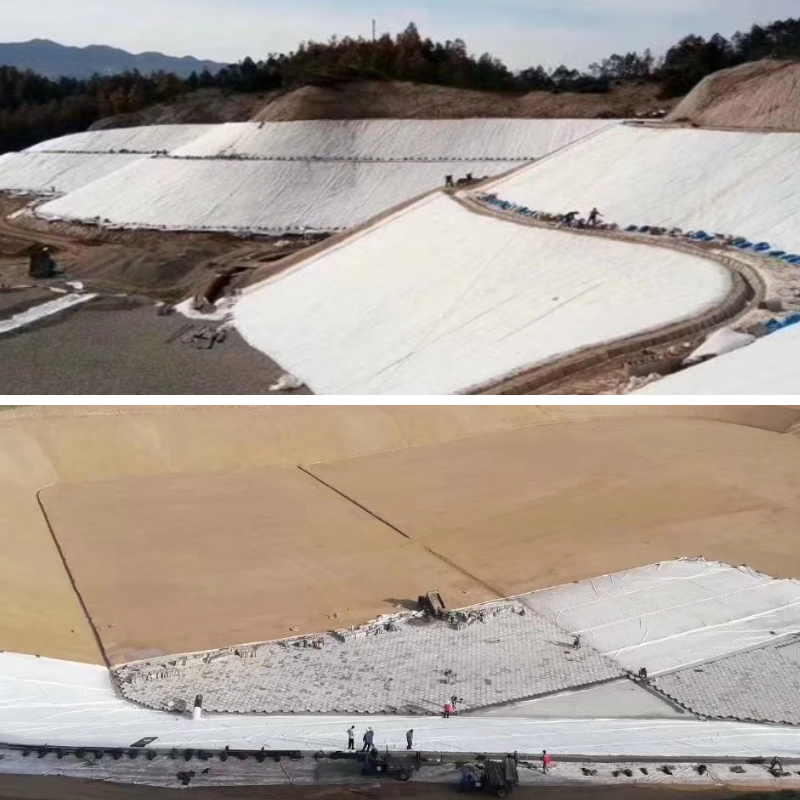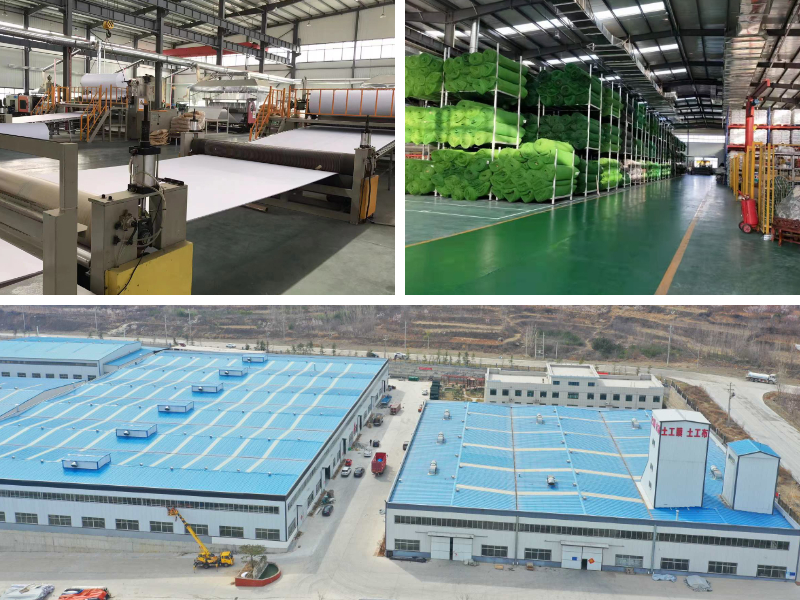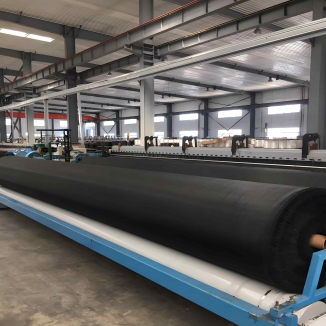Geotextiles in Road Construction: Preventing Soil Erosion and Extending Pavement Life
Road infrastructure is the spine of current day transportation, enabling economic extend and connectivity. However, growing prolonged lasting roads that face up to environmental stressors—such as soil erosion, heavy web page traffic loads, and excessive weather—requires present day engineering solutions. Among these, geotextile material has emerged as a quintessential fabric for improving street durability and performance. This article explores how geotech material and geotextile avenue material mitigate erosion, adorn drainage, and extend pavement life, presenting reasonably priced advantages for infrastructure initiatives worldwide.
The Role of Geotextiles in Modern Road Construction
Geotextiles are artificial or herbal permeable fabric designed to pork up soil, filter fluids, and separate layers in civil engineering projects. In avenue construction, geotextile avenue material serves three integral functions:
Soil Stabilization: Preventing subgrade soil from transferring underneath internet site on-line web page traffic loads.
Drainage Management: Allowing water to bypass by means of thru at the equal time as defending soil particles.
Erosion Control: Protecting slopes and embankments from wind and water damage.
Unlike regular techniques like gravel layers or chemical stabilizers, geotech material affords a sustainable, low-maintenance alternative. Its versatility makes it terrific for a range of applications, from rural dust roads to high-traffic highways.
How Geotextile Cloth Prevents Soil Erosion
Soil erosion is a essential intent of avenue failure, specially in areas with heavy rainfall or steep slopes. When water flows over unprotected soil, it dislodges particles, developing ruts and gullies that compromise avenue integrity. Geotextile cloth addresses this bother thru two mechanisms:
1. Surface Protection
Placing geotech cloth on uncovered soil surfaces acts as a shield nearer to raindrop have an effect on and floor runoff. The fabric’s fibrous structure dissipates the power of flowing water, lowering its manageable to erode soil. For example, on roadside slopes, geotextile avenue cloth can be anchored with staples or stakes to quit displacement, making high-quality long-term stability.
2. Subsurface Reinforcement
Beneath the avenue surface, geotextile avenue cloth separates the aggregate base from the subgrade soil. This prevents amazing particles from migrating into the drainage gadget or the avenue base, which should lead to clogging or uneven settling. By maintaining super layers, the cloth ensures regular load distribution and reduces the risk of cracking or deformation.
Enhancing Pavement Life with Geotech Fabric
The lifespan of a avenue relies upon upon on its practicable to face up to repeated stress from motors and environmental factors. Geotech material extends pavement existence with the useful resource of potential of addressing two standard failure points:
1. Reducing Rutting and Cracking
Rutting takes vicinity when the subgrade softens underneath heavy loads, inflicting the pavement to deform. By stabilizing the soil, geotextile cloth distributes web page site visitors hundreds larger evenly, minimizing rutting. Additionally, the fabric’s flexibility consists of common floor strikes barring cracking, no longer like inflexible substances like concrete.
2. Improving Drainage Efficiency
Water infiltration is a silent killer of roads. When water accumulates beneath the pavement, it weakens the subgrade by means of way of tactics like frost heave or soil liquefaction. Geotextile street cloth lets in drainage by way of enabling water to get away via its porous shape whilst blockading off soil particles. This prevents hydrostatic stress buildup, a critical contributor to pavement failures.
Types of Geotextiles Used in Road Construction
Not all geotextiles are created equal. The desire of fabric relies upon upon on the project’s specific needs, such as soil type, climate, and visitors volume. The three most important education are:
1. Woven Geotextiles
Made from interlaced polypropylene or polyester yarns, woven geotech material affords excessive tensile electricity and low elongation. It’s splendid for features requiring sturdy reinforcement, such as stabilizing inclined subgrades or organising conserving walls.
2. Non-Woven Geotextiles
Non-woven geotextile fabric consists of randomly geared up fibers bonded with the beneficial aid of thermal or chemical processes. Its greater permeability makes it extraordinary for drainage applications, such as placing apart filter layers in French drains or defending geomembranes in landfills.
3. Composite Geotextiles
Combining woven and non-woven layers, composite geotextile avenue material presents twin functionality—reinforcement and filtration. This hybrid fabric is often used in high-stress environments like airport runways or industrial roadways.
Installation Best Practices for Geotextile Road Fabric
Proper set up is quintessential to maximizing the advantages of geotech fabric. Follow these steps to make wonderful fundamental performance:
Site Preparation: Clear the neighborhood of debris, rocks, and vegetation. Grade the subgrade to the favored slope and compact it thoroughly.
Unrolling the Fabric: Lay the geotextile material flat, heading off wrinkles or folds. Overlap adjoining sheets via skill of plausible of at least 12 inches to stop soil bypass.
Anchoring: Secure the cloth with U-shaped stakes or staples each and every 3–5 feet, specifically on slopes or windy sites.
Backfilling: Cover the material with a layer of mixture or soil barring extend after set up to shield it from UV degradation and bodily damage.
Compaction: Use a vibratory curler to compact the backfill, making positive excellent contact between the fabric and the subgrade.
Case Studies: Success Stories of Geotextile Implementation
Real-world examples show off the transformative have an impact on of geotextile avenue fabric:
1. Rural Road in Humid Climate
In a tropical location inclined to heavy rainfall, a gravel avenue suffered from everyday erosion and potholes. After inserting in a non-woven geotech material beneath the gravel layer, erosion ceased, and renovation expenditures dropped via way of 70% over 5 years.
2. Highway Expansion Project
During a twin carriageway widening project, engineers used a woven geotextile fabric to stabilize the shoulder slopes. The cloth decreased soil loss thru way of 90% in difference to ordinary methods, stopping landslides and making sure employee safety.
Environmental and Economic Benefits of Geotextiles
Beyond performance, geotextile avenue cloth affords sustainability advantages:
Reduced Material Use: By stabilizing soil, geotextiles reduce the prefer for thick combination layers, lowering material costs and environmental impact.
Longevity: Roads developed with geotech material require fewer repairs, reducing lifecycle emissions from enchancment equipment.
Erosion Prevention: Protecting soil from erosion preserves topsoil and prevents sediment air air air pollution in shut with the aid of way of waterways.
Common Misconceptions About Geotextiles
Despite their validated benefits, some myths persist about geotextile cloth:
“Geotextiles are too expensive.” While the upfront rate would perhaps moreover be large than desired methods, the long-term economic economic financial savings from reduced renovation outweigh the preliminary investment.
“They’re totally for high-traffic roads.” Geotech fabric advantages obligations of all sizes, from residential driveways to farm roads.
“Installation is complicated.” With ideal training, crews can installation geotextiles swiftly the use of standard equipment.
Future Trends in Geotextile Technology
The geotextile agency continues to innovate, with tendencies like:
Biodegradable Options: Researchers are creating plant-based geotextile avenue material that decomposes safely after its provider life.
Smart Sensors: Embedding sensors into geotextiles ought to allow real-time monitoring of soil moisture or strain, permitting proactive maintenance.
Nanotechnology: Coating geotextiles with nanoparticles might also moreover decorate their sturdiness or self-cleaning properties.
Conclusion: The Path Forward for Sustainable Road Construction
As international infrastructure wishes grow, geotextile fabric and geotech cloth will play an an growing vary of necessary position in putting up resilient, eco-friendly roads. By stopping soil erosion, bettering drainage, and extending pavement life, these substances supply a smart funding for public and non-public initiatives alike. Whether you’re setting up a new toll avenue or rehabilitating an historical road, think about geotextile avenue material as a cornerstone of your design—your charge fluctuate and the surroundings will thank you.
Contact Us
Company Name: Shandong Chuangwei New Materials Co., LTD
Contact Person :Jaden Sylvan
Contact Number :+86 19305485668
WhatsApp:+86 19305485668
Enterprise Email: cggeosynthetics@gmail.com
Enterprise Address: Entrepreneurship Park, Dayue District, Tai 'an City,
Shandong Province









